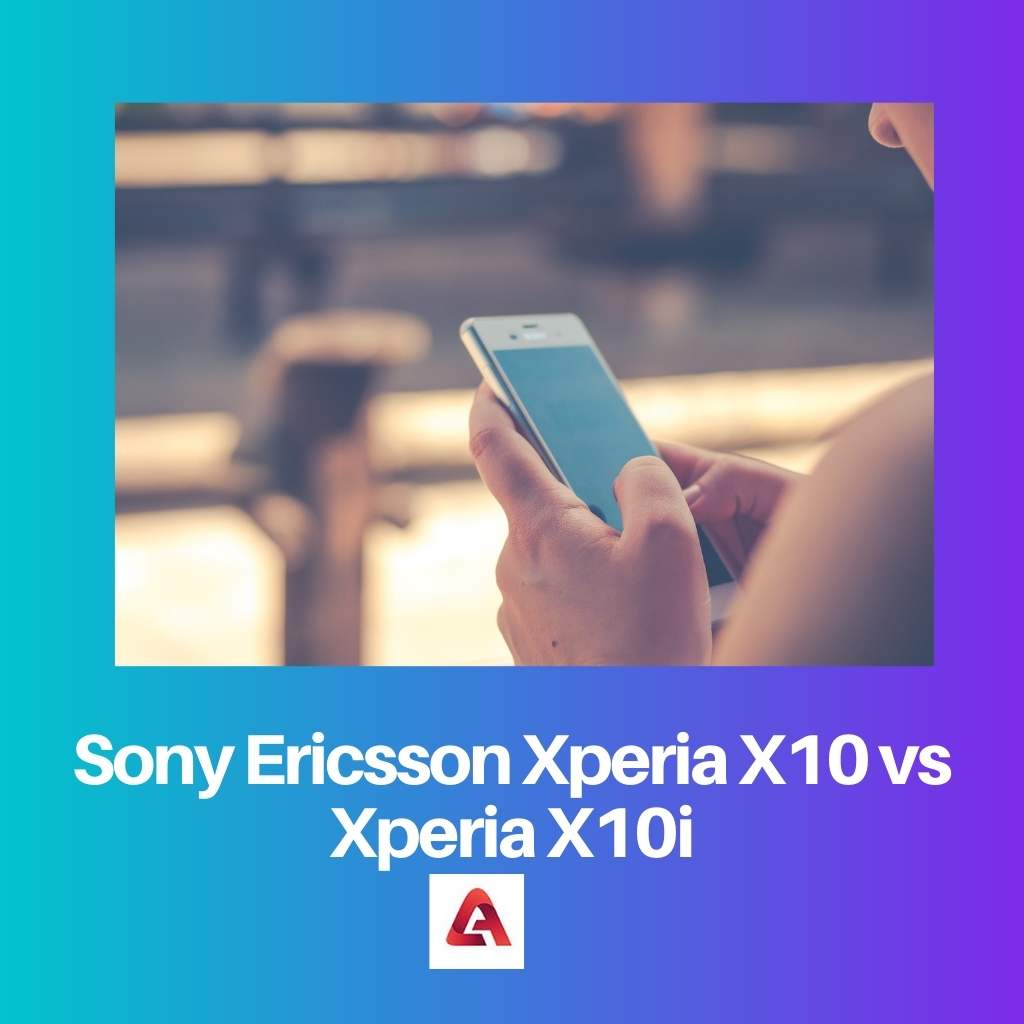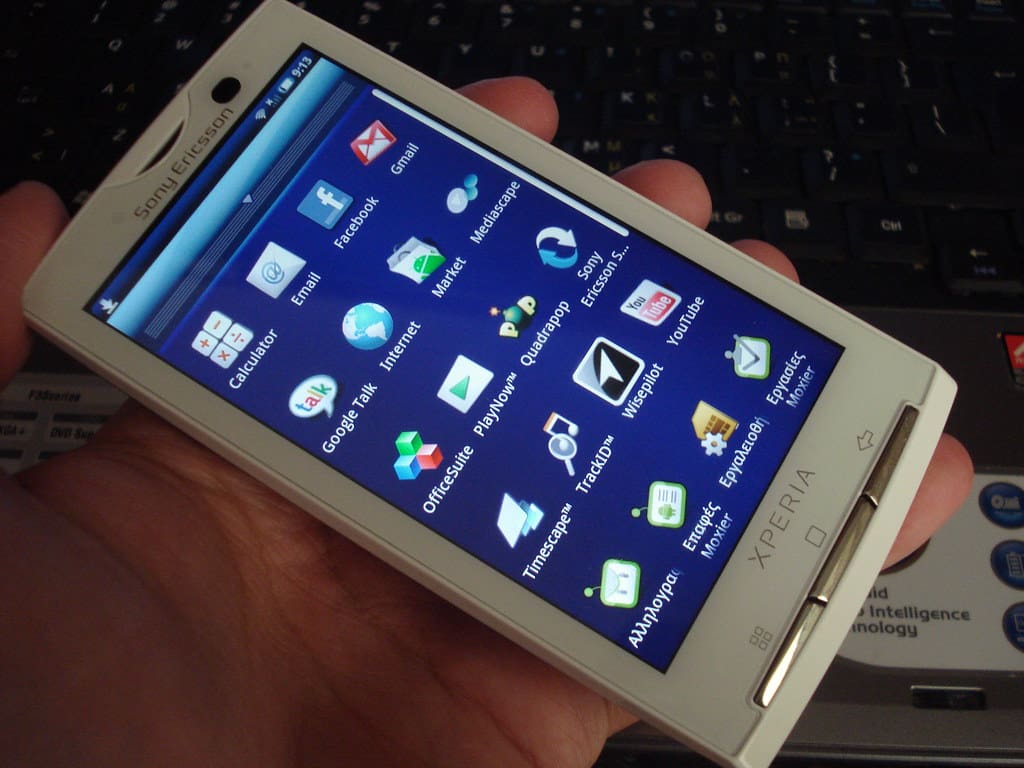The Xperia line of phones by Sony included some of the most powerful and capable phones in the market at the time.
They featured high-quality imaging cameras, excellent connectivity, and good battery life. The products offered were highly capable, making them some of the fastest-selling mobile phones produced by Sony.
Key Takeaways
- Xperia X10 supports only GSM networks, whereas Xperia X10i is compatible with GSM and UMTS networks.
- Xperia X10i offers a faster internet browsing experience due to its HSDPA connectivity.
- Both smartphones share identical features and designs, including a 4-inch touchscreen, 8.1 MP camera, and 1 GHz processor.
Sony Ericsson Xperia X10 vs Xperia X10i
Xperia X10 is a type of Sony Ericsson Android smartphone which has connectivity bands configured for 800, 850, 1900, and 2100 frequency waves. Xperia X10i is a type of Sony Ericsson Android smartphone which is configured to support more connectivity bands, e.g. 900, 1900, and 2100 frequency waves.

Sony Ericsson Xperia X10 is an Android smartphone produced by Sony in collaboration with Ericsson.
It was a part of the Xperia line-up of phones and was designed as a high-end smartphone by Sony to compete against other flagship competitors. It was the first Ericsson smartphone to run on the Android OS.
Sony Xperia X10i was the upgraded version of the Xperia X10 and was modified to support higher frequency bands for 3G connectivity.
Hardware modifications were made to incorporate higher frequency radio bands to allow the phone to deliver high-speed connectivity while using the 3G network. Software changes were also made to provide a smooth user experience.
Comparison Table
| Parameters of Comparison | Xperia X10 | Xperia X10i |
|---|---|---|
| Definition | Xperia X10 is the high-end smartphone from the Xperia line of phones produced by Sony, in collaboration with Ericsson | Xperia X10i is the upgraded version of the Xperia X10. The phone was modified to support higher frequency bands for 3G connection |
| Frequency | Xperia X10 can support bands of 800, 850, 1900, and 2100 frequency | Xperia X10i can support bands in the range of 900, 1900, 2100 frequency |
| Connectivity speed | Xperia X10 has low connectivity speed | Xperia X10i has a higher connectivity speed than X10 |
| Antenna bands | Xperia X10 was installed with the normal antenna bands used by Sony on other phones | The antenna bands inX10i were upgraded to support higher frequency waves |
| Bandwidth | Xperia X10 operates in the lower bandwidth of frequencies | Xperia X10i operates in the higher bandwidth |
What is Sony Ericsson Xperia X10?
Xperia X10 was a high-end smartphone developed by Sony in collaboration with Ericsson. The phone was part of the Xperia lineup of phones and was released as the flagship model.
The phone was released in March 2010. It was the first Ericsson smartphone that could run on the Andriod OS, and it was installed with the Android Donut 1.6 OS.
The smartphone market at the time was occupied largely by Samsung. Hence for Sony to produce an impact, it had to develop a high-end product. Thus Sony collaborated with Ericsson to create products to compete with other high-end smartphones.
Sony Ericsson Xperia X10 was designed as the flagship model of the Xperia lineup of Sony smartphones. The phone featured an 8-megapixel camera with HD video recording capabilities at 30 FPS.
The phone was installed with the powerful Qualcomm Snapdragon QSD8250 chipset mated to the 1GHz single-core Scorpion CPU. This allowed the phone to deliver smooth performance.
The phone was also installed with 3G antenna bands to allow 3G connectivity. The phone could operate in the frequency range of 800, 850, 1900, and 2100 frequency waves.
The antenna bands were upgraded in the later versions of the phone to allow the device to operate in the higher frequency ranges of the 3G network.

What is Sony Ericsson Xperia X10i?
Xperia X10i is the upgraded version of the Sony Xperia X10. The phone was upgraded with better radio bands and frequency adaptation capabilities to allow for better 3G connectivity.
The phone was released in 2010, and at the time, 3G network towers were being set up in major cities. 3G connectivity offered the highest speed and bandwidth.
Hence advancements in smartphone connectivity were being made by major mobile manufacturers to make their products more capable of handling 3G networks.
Sony also upgraded the radio bands and antenna of their flagship model, the Xperia X10, to make the phone utilize higher frequency waves of the 3G network.
Thus the phone was able to support 3G bands in the 900, 1900, and 2100 frequency ranges. This allowed for better connectivity, with higher network speeds and more stability.
Along with the speed, the bandwidth of connectivity was also increased. Thus the phone was now capable of utilizing high bandwidth connectivity while providing higher speeds of connectivity.
This allowed for more bit-rate, allowing the phone to send more data while maintaining the speed and stability of the connection.
The upgrade to include higher frequency waves allowed for more coverage, as people living away from the cell towers could also enjoy strong 3G connectivity with moderate speed.
Main Differences Between Xperia X10 and Xperia X10i
- Xperia X10 is a high-end smartphone produced by Sony in collaboration with Ericsson. Xperia X10i is the upgraded version of the X10
- Xperia X10 can support 800, 850, 1900, and 2100 frequency bands. Xperia X10ii can support 900, 1900, and 2100 frequency bands.
- Xperia X10i has a higher connectivity speed than Xperia X10
- The antenna bands in Xperia X10i were upgraded over the normal antenna bands in Xperia X10
- Xperia X10i operates in the higher frequency range, whereas Xperia X10 operates in the lower frequency range




